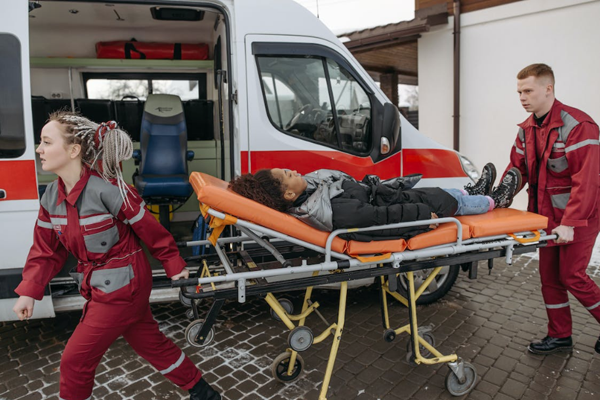
Working as a paramedic in Tennessee has been one of the great privileges of my life. There is truly nothing like the feeling of providing life-saving healthcare. Unfortunately, Emergency Medical Services, or EMS, has slowly become more of a convenience-based service than a life-saving one.
I have heard the statement “going to the hospital by ambulance will get me seen faster.” This is not true. Before utilizing EMS services, know what they can do.
Ambulances are mini emergency rooms on wheels. A Nashville Fire Department paramedic reported, “We can maintain your airway if you can’t on your own with the use of breathing tubes and ventilators, we can control your heart rate and blood pressure using medications and electricity, and we can even perform procedures like needle decompression and surgical cricothyrotomies” (emergency breathing-tube insertions involving an incision).
A paramedic from Williamson County shared that they “carry whole blood and blood products to give transfusions.” Paramedics do these interventions because they can save lives when time is of the essence. EMS often begins treatment on scene so that care can be received immediately before initiating transport. We must remain readily available for those who may require critical intervention.
Unlike fire and police departments, EMS was not always an essential service. Tennessee did not recognize EMS as essential until April 2021. The state legislature passed the bill that transformed Tennessee into the 12th state to receive federal funding and require counties to offer EMS services. Without this support, many areas relied on volunteer services.
My employer county’s contribution for paid and volunteer services equated to only 0.44% of the county’s budget in the 2022–23 fiscal year. Comparatively, the county’s K–12 school expenditures equated to 71.3%. This massive difference in financial support indicates that EMS services rely highly upon insurance to keep ambulances staffed and available.
You may ask yourself, “How does any of this affect me?” If you or a loved one experienced a severe car accident, cardiac arrest, or are struggling to breathe, how long would you expect to wait for an ambulance to arrive? Based on data collected from Rutherford County in 2022, the average response time was 7.3 minutes.
Delays in ambulance arrivals are partly because there are not enough providers to staff ambulances. Also, the ambulances that are available may come from a different town due to an overabundance of 911 calls and long waits to turn over patients in ERs. While it is generally accepted that EMS creates an otherwise unmet need for care for the elderly or those living in poverty, non-emergency transports burden an already taxed system. Complaints that have no threat to life such as chronic pain, nausea, flu symptoms, or intoxication are frequently transported to the ER.
There are things that a community can do to reduce the strain on EMS and overcrowded ERs. Before calling 911 for an ambulance, consider these questions:
• Can I safely take a personal vehicle or taxi to the emergency room?
• Can my primary care provider or an urgent care clinic solve my problem?
• Is it necessary for my safety to expose healthcare providers to my illness?
• Will ambulance transport save my life, minimize suffering or minimize delay in receiving care (addressing immediate threats to life, limb or eyesight)?
• Will moving the patient cause further harm or injury?
• Will the patient truly benefit from ambulance transport?
These are all critical things to consider during a possible emergency. Call 911 and EMS can help determine the next appropriate steps when in doubt.
A few essential facts to know:
1. The Good Samaritan law provides immunity from arrest and prosecution for those experiencing or witnessing a drug overdose or underage alcohol intoxication if emergency services are summoned. Please tell us the truth so we can help you—you won’t be in trouble.
2. If someone calls 911 on your behalf, you have the right to refuse care and transport, as long as you are in the right state of mind.
3. Many health and car insurance companies, including Medicare and Medicaid, won’t pay for the majority or any of the bill for ambulance transport if it is deemed medically unnecessary. Be proactive and look into your health insurance policy.
4. Ambulance transport to the ER does not mean you get to skip the line. Triage exists to aid those who need it urgently first. Patients are seen based on the determined level of priority. Patients are placed in the waiting room if instructed to by ER staff.
5. Protocols are in place to protect both paramedics and patients. We cannot stray from those protocols without consent from medical direction.
6. A medical power of attorney only goes into effect if the patient can no longer make their own decisions. Patients still possess autonomy when coherent.
7. EMS personnel often work 24-hour-plus shifts at multiple jobs. Our meals and sleep are frequently interrupted by 911 calls. We work weekends, holidays and rarely spend time with family and friends and have struggles with anxiety, depression, PTSD, illness, and chronic pain just like you do. Please treat us with the same respect, kindness, and dignity you would expect to receive.
I hope this call to action encourages you to learn just what EMS provides to your community.
Rest assured, we are just a phone call away—24 hours a day, seven days a week, 365 days a year.
Thanks for your support,
—Your Exhausted Neighborhood Paramedic














Thank you for letting us know that it is the role of a paramedic to provide treatment on the scene to give the patient immediate care and critical intervention before they are transported to a medical facility. My sister travels a lot for work, so she wants to get a certification as a paramedic to use for emergency situations whenever she is traveling. I’ll keep this in mind while I help her find an EMT exam prep course to take for his certification soon.
Comment June 6, 2023 @ 5:36 am